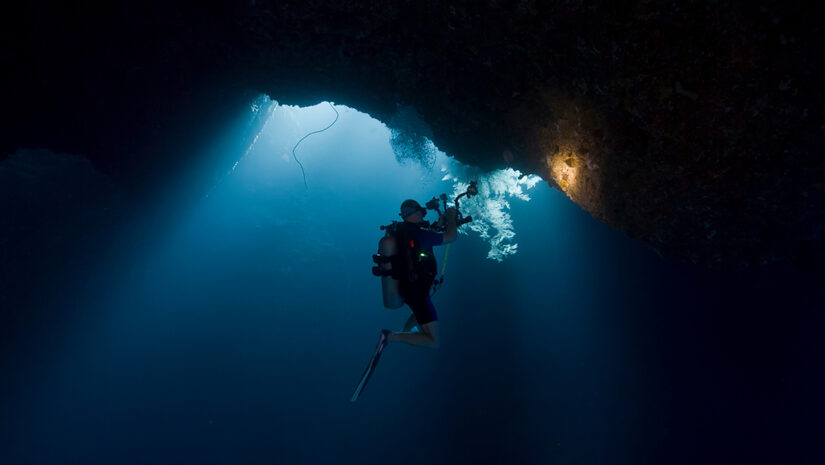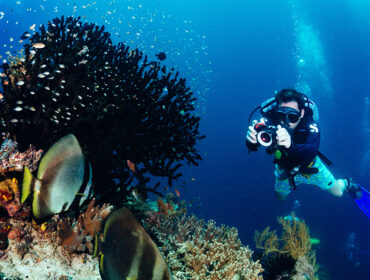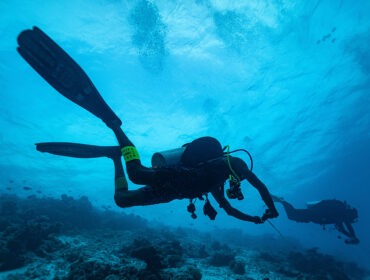Cavern Diving
Cavern diving is the exploration of a permanent natural overhead environment while remaining within the portion of the light zone or sight of the entrances. It differs from cave diving in that while cave divers may penetrate long distances into the cave, cavern divers go no further than 130 feet from the surface. Additionally, cavern divers keep the entrance in sight at all times and use a guideline so that, should the sight of the entrance be accidentally lost, divers can immediately regain it.
These safety precautions allow for emergency swimming ascents and thus allow cavern divers to enjoy the same safety margins that open-water divers enjoy. This is also the primary reason why cavern diving is considered a form of recreational diving, and recreational-level specialty certifications can be obtained from agencies such as NAUI, SSI, PADI, and SDI.
Cave Diving
Cave diving is considered a form of technical diving in which specialized SCUBA equipment is used to explore natural or artificial caves and beyond recreational diving. It is also one of the most challenging and potentially dangerous as it requires more extraordinary skill, good dive planning, preparation, buoyancy control, and problem-solving and acting quickly. Certification for cave diving is available only through cave diving organizations such as NSS-CDS and NCAD or technical diving associations such as NAUI, GUE, and TDI.
Risks in cave diving are significantly greater, often requiring specialty dive equipment or modifications to scuba diving equipment to reduce the risk. Cave divers typically use double tanks with unique K-valve regulators to shut off a regulator should an o-ring rupture while continuing to use the second. Apart from powerful long lasting dive lights, cave divers also require reels and guidelines to navigate their way through the cave systems, and similar to wreck diving, the diver must ensure that none of his equipment can get snagged on an outcrop or while diving in confined spaces. Also critical is budgeting or planning air consumption to give you enough air to return to the surface.
Despite the risks, Cave and cavern diving is one of the most exhilarating forms, with no two dives being alike. Divers are taken to unique environments with clear water and stunning geological formations. In addition to the technical aspect and training involved, this form of diving is truly a rewarding experience for those who dare to try it.





